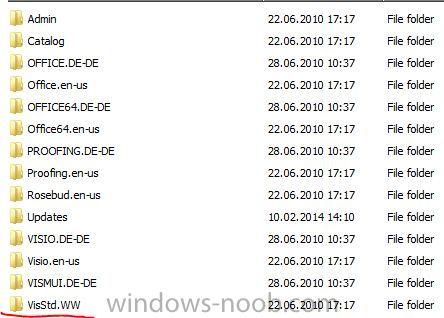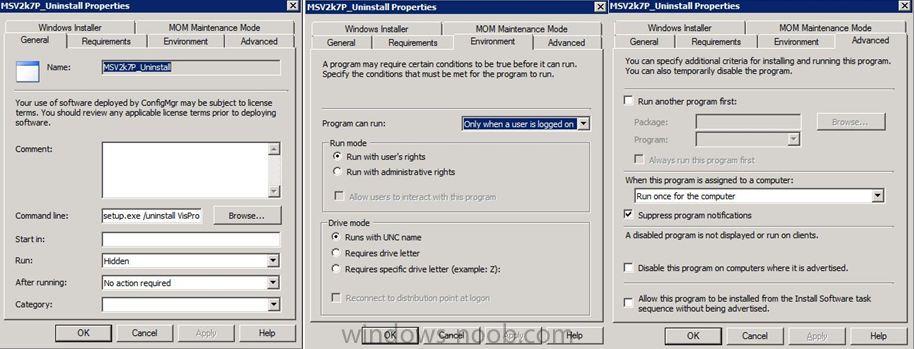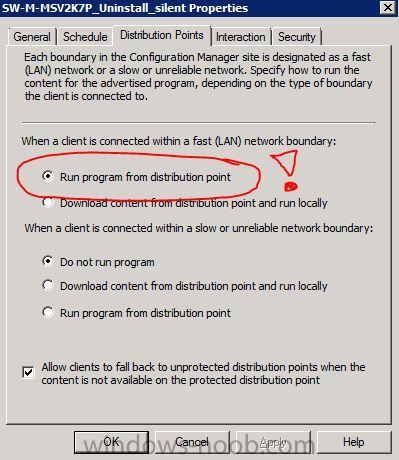Search the Community
Showing results for tags 'office'.
-
I deployed the latest March Update for Office 365 to one Test Machine and it was marked as compliant even though it hasn't installed the update and is still on the old Office 365. I have checked the logs, nothing there. I went through the logs mentioned here https://technet.microsoft.com/en-gb/library/bb693878.aspx Can you someone please point me in the right direction of troubleshooting? Thank you
-
hello, I have installed office access 2016 and access runtime 2013. unfortunately I need exactly these versions. I have a program that uses access runtime 2013. if I install after the program access 2016, he wants to configure again and again. a normal user does not have the right. How can I achieve this? thank you
-
hello, I have installed office access 2016 and access runtime 2013. unfortunately I need exactly these versions. I have a program that uses access runtime 2013. if I install after the program access 2016, he wants to configure again and again. a normal user does not have the right. How can I achieve this? thank you
-
Hi, all. I noticed today that the disk space on our Config Manager server was getting a bit more filled up than I'd like. Dumping the .wim.bak files left over from offline servicing helped, but when I fired up Treesize, it pointed out that our Office 2013 updates are taking up a TON of space. Right now, that number is right around 63GB. This for an app that's only three years old, while a 6 year old OS's (Win7) updates are only taking up around 11GB. September's Office 2013 updates alone comprise 231 folders and files worth of stuff, out of 7416 total folders and files. We've only got 139 updates currently deployed that aren't expired or superseded, and they span years worth of stuff, so I'm not sure where all the extra stuff's coming from. I'd imagine most/every update would have two files - 32 and 64 bit - but not tens of files. A lot, maybe a majority of the files appear to be language packs (e.g. proof-zh-tw.cab) that we have zero use for, even though we're only set to download English packages. Anyone know if this is normal for Office 2013? Seems a bit excessive, but I've got nothing to compare against.
- 4 replies
-
- office
- office 2013
-
(and 3 more)
Tagged with:
-
I work at a community college and we have sccm clients running Office versions from 2003-2013. I have scoured the web trying to find a query that could accomplish this task, but with my lack of SQL knowledge and specificity of the statement, I couldn't find a solution. Any thoughts?
-
Hi everyone, I have packaged Office 2013 Enterprise software and I keep getting error code 0x756B (30059) Now I know this code is related to licence keys so I copied the software to a space laptop. Created an MSP file and dumped it in the updates folder. Then I run the setup.exe locally and it works. When I copy that software to a share and package it it doesn't work and get the above code. Any suggestions? Thanks in advance.
- 1 reply
-
- office 2013
- sccm 2012
- (and 4 more)
-
Hi, the process for uninstallation for ALL Office, Visio and Project versions (2007 and 2010) would go like this: create a new .xml file named: "SilentUninstallConfig.xml" and save it in your installation folder or where you want. Populate the file with: <Configuration Product="APPLICATIONID"> <Display Level="none" CompletionNotice="no" SuppressModal="yes" AcceptEula="yes" /> <Setting Id="SETUP_REBOOT" Value="Never" /> </Configuration> ____________________________________________________________________________ Replace the APPLICATIONID inside of " " with correct product id: Visio 2007 Standard: "VisStd" Visio 2007 Professional: "VisPro" Visio 2010 Professional: "Visio" ! (important: in 2010 version there is no VisPro, only Visio product id!) Project 2007 Standard: "PrjStd" Project 2010 Professional: "PrjPro" Office 2007 Standard: "Standard" Office 2007 Enterprise: "Enterprise" Office 2010 Professional: "ProPlus" Example: VISIO 2007 PROFESSIONAL: <Configuration Product="VisPro"> <Display Level="none" CompletionNotice="no" SuppressModal="yes" AcceptEula="yes" /> <Setting Id="SETUP_REBOOT" Value="Never" /> </Configuration> Second part is the command prompt order which goes like this: CMD: setup.exe /uninstall APPLICATION ID /config SilentUninstallConfig.xml AGAIN: replace the APPLICATION ID with the correct variable from examples shown above. P.S. You can find the product id from Microsoft's products in the XYZ.WW folder: CREATE A NEW PROGRAM IN SCCM 2007: ADD DISTRIBUTION POINT MAKE ADVERTISEMENT Important: In my case it did not work with the option of running the program with the DP, what worked was "Download content from DP and run locally", that means that it has to download 500 mb+ of data to every machine. Not the very best idea but that is how it works. Hints that will save you some nerves: 1. Be patient it can take up to 20-30min until you see the results on your test machine. SCCM 2007 is slow and somethimes buggy + it has to download xyz amount of data to the client. 2. In my case when you create a program it runs with both admin and user rights (user has to be local admin on the machine). 3. Ensure that there are not windows updates pending! very important! Advertisement will fail until client is free from windows updates. 4. Folder in Windows\SysWOW64\CCM\Cache is your friend, you can see there when the package is being downloaded. If for any reason package is already there but no results you have to delete that package otherwise advertisement will not download again! Tttt that's all folks! Open to suggestions how to make the process more efficient.
-
- Office
- Uninstall Office
- (and 8 more)
-
Hi there, Just getting into SCCM 2012 and I have a question about what might be the best way to setup my boundaries. I would like to use our AD sites as it seems to be the least administrative heavy option, however because of our configuration I'm not sure it is possible. The way our AD sites are configured is this - we have all of our major offices with domain controllers created as a site in AD with all of their subnets defined, however we have branch offices that do not have domain controllers in them as they have too few clients located there. Those subnets are defined in the main office AD site instead of having their own site - which from what I have read is the MS best practice. My question is, is there a way to utilize these AD sites as boundaries and somehow override those specific subnets that are for branch offices, or do I have to scrap the AD site plan and do all of these boundaries as ip subnets and manually add the approriate ones to boundary groups? Thanks!
- 2 replies
-
- boundaries
- ad
- (and 4 more)
-
Hello, I have an Office 2010 32 bits package, I deploy this package on 32 and 64 bits OS with SCCM 2012. I want to convert this package into an application and I would like to know if I should check the "run installation program as 32-bit process on 64-bit clients" box in the installation program ? If yes, should I do the same thing for all my 32 bits applications ? Thank you.
-
- application
- office
-
(and 2 more)
Tagged with:
-
Office Installation Failure through MDT
mendoza.michael posted a question in Microsoft Deployment Toolkit (MDT)
Hello, First I'd like to say thanks for this site. It has been incredibly helpful and has been a blessing. I'm running MDT 2010 update 1 and I'm having an intermittent but relatively consistent issue when trying to deploy Office 2010 and 2007. I have a base Windows 7 image deployed and an install applicaiton task sequence for the Office product. Sometimes the Office installation fails (other applications install fine) and I get an unexpected return code 20 on the LTI summary page. The application install log file shows the following: LIS failed to cache download "{90140000-0011-0000-1000-0000000FF1CE}-C" resource "ProPsWW.cab". Cache Error 0x80070040 Source Resolution aborted Error: LIS: Failed to cache download "{90140000-0011-0000-1000-0000000FF1CE}-C" resource "ProPsWW.cab". Type: 20::FileNotFound. What I see in the Window7 app log is that Office get's installed...then errors, then uninstalls itself. In the deployment share, ProPsWW.cab is in the appropriate spot with the appropriate permissions. Again, sometimes the install works, sometimes it doesn't. I created an Application Install only Task Sequence...and with this...sometimes it works, sometimes it errors out with the same reason as mentioned above. I believe when MDT/LTI goes through the deployment process it copies the applications files over to the MSOcache. Are some files not properly copied over? Do I even have the correct understanding? Any help would be very appreciated. Michael. -
If you haven’t seen it already, the whole Wave 15 has reached RTM state, which means that the code is ready. This means that Office 2013, Lync 2013, Exchange 2013 and Sharepoint 2013 is now code completed. The software will be available for download in mid November. More information can be found on Exchange Team blog. Another update regarding Exchange is that Microsoft re-released the Update Rollups. Exchange 2010 UR4 for SP2 was re-released as UR4 v2, more info/download. Exchange 2010 UR7 for SP1 was re-released as UR7 v2, more info/download. Exchange 2007 UR8 for SP3 was re-released as UR8 v2, more info/download. Since my last post I’ve had a great time attending MEC in Orlando, lots of great contents and met a lot of inspiring people. In the upcoming weeks I will try to publish the next post, regarding load balancing for Exchange 2013 Preview. (It will be updated when the RTM is downloadable if there are any changes).
-
Here is my issue. Our image was built with a MAK key for Office 2010. Since I didn't build the images, I payed no attention to this. Well after imaging over 1000 machines, we've figured out that we need to use a KMS host for Office activation as our MAK keys are running over. I've already installed the Office KMS host on a machine that currently activates our Server 2008 R2 boxes, the problem is how to change all the machines that have been imaged that won't activate over to the KMS host so they will activate. I know we will need to redo the image to input the KMS key but how can I change what's already out there? Thanks!
- 1 reply
-
- office
- activation
-
(and 3 more)
Tagged with:
-
I'm having an issue imaging one of my desktops. This is a standard Windows 7 64 bit image and I genearally use it a couple times a week with no issue. I have one computer, however, where it just hangs indefinately on the installation of Office. This is the last advertisement shown for my Windows 7 image on this computer (2 days ago). Information Milestone VAN 5/2/2012 4:53:18 PM VAND04601 Software Distribution 10005 Program started for advertisement "VAN20181" ("VAN000EC" - "Office Professional 2010 (x32 Only)"). Command line: "\\abc.def.LOCAL\SMSPKGD$\VAN000EC\setup.exe" /adminfile custom.msp Working directory: \\abc.def.LOCAL\SMSPKGD$\VAN000EC\ User context: NT AUTHORITY\SYSTEM 1464 1296 And when I check the SMS Trace (C:\Program files (x86)\SMS_CCM|smspxe.log) I get multiple lines with this (but no error). Advertisement results: OfferId:VAN20181 OfferTime:02/08/2011 10:38:00 PackageID:VAN00138 BootImageID:VAN00001 PackageVer: PackagePath:\\VCVANSCCM1\SMSPXEIMAGES$\SMSPKG\VAN00001\ Mandatory:0 smspxe 4/24/2012 1:56:12 PM 3532 (0x0DCC)
-
Hello! I'm currently attempting to deploy Windows 7 and Office 2010 in the same task sequence. In my current TS, Windows 7 installs correctly, but Office 2010 does not. The error I get in smsts.log is that the step (Install Software) must be running in full OS. However, I tell the PC to reboot before it attempts to run this package - and to restart into the default operating system (not Windows PE). Is there some setting I've missed somewhere? Relevant log piece: !--------------------------------------------------------------------------------------------! TSManager 2/10/2012 8:30:29 AM 1040 (0x0410) Expand a string: FullOS TSManager 2/10/2012 8:30:29 AM 1040 (0x0410) !bInWinPE, HRESULT=80070032 (e:\nts_sms_fre\sms\client\tasksequence\executionengine\instruction.cxx,2725) TSManager 2/10/2012 8:30:29 AM 1040 (0x0410) The step (Install Software) must be running in full OS TSManager 2/10/2012 8:30:29 AM 1040 (0x0410) !--------------------------------------------------------------------------------------------! TSManager 2/10/2012 8:30:29 AM 1040 (0x0410) Failed to run the action: Install Software. The request is not supported. (Error: 80070032; Source: Windows) TSManager 2/10/2012 8:30:29 AM 1040 (0x0410) Sending status message . . . TSManager 2/10/2012 8:30:29 AM 1040 (0x0410) Send a task execution status message SMS_TSExecution_ActionFailError TSManager 2/10/2012 8:30:29 AM 1040 (0x0410) MP server WDS-101.DEPLOY.COM and port 80. SSL=false. CRL=false. TSManager 2/10/2012 8:30:29 AM 1040 (0x0410) Site code: WDS TSManager 2/10/2012 8:30:29 AM 1040 (0x0410) Client machine name: xw4300Target TSManager 2/10/2012 8:30:29 AM 1040 (0x0410) Client Identity: GUID:7938E5ED-99C7-4832-8909-C8D651CAC9C7 TSManager 2/10/2012 8:30:29 AM 1040 (0x0410) Advertisement ID: WDS2000D TSManager 2/10/2012 8:30:29 AM 1040 (0x0410) Package ID: WDS0001C TSManager 2/10/2012 8:30:29 AM 1040 (0x0410) Sending StatusMessage TSManager 2/10/2012 8:30:29 AM 1040 (0x0410) Formatted header: TSManager 2/10/2012 8:30:29 AM 1040 (0x0410) <Msg SchemaVersion="1.1" ReplyCompression="zlib"><ID/><SourceID>f31962f6-5f23-4070-8f07-8c1a96a88a93</SourceID><SourceHost/><TargetAddress>mp:[http]MP_StatusManager</TargetAddress><ReplyTo>direct:OSD</ReplyTo><Priority>3</Priority><Timeout>3600</Timeout><SentTime>2012-02-10T16:30:29Z</SentTime><Protocol>http</Protocol><Body Type="ByteRange" Offset="0" Length="2152"/><Hooks/><Payload Type="inline"/><TargetHost/><TargetEndpoint>StatusReceiver</TargetEndpoint><ReplyMode>Sync</ReplyMode><CorrelationID/></Msg> TSManager 2/10/2012 8:30:29 AM 1040 (0x0410) CLibSMSMessageWinHttpTransport::Send: URL: WDS-101.DEPLOY.COM:80 CCM_POST /ccm_system/request TSManager 2/10/2012 8:30:29 AM 1040 (0x0410) The request has succeeded. 200 OK TSManager 2/10/2012 8:30:29 AM 1040 (0x0410) Set a global environment variable _SMSTSLastActionRetCode=50 TSManager 2/10/2012 8:30:29 AM 1040 (0x0410) Set a global environment variable _SMSTSLastActionSucceeded=false TSManager 2/10/2012 8:30:29 AM 1040 (0x0410) Clear local default environment TSManager 2/10/2012 8:30:29 AM 1040 (0x0410) Let the parent group (Install Office) decides whether to continue execution TSManager 2/10/2012 8:30:29 AM 1040 (0x0410) The execution of the group (Install Office) has failed and the execution has been aborted. An action failed. Operation aborted (Error: 80004004; Source: Windows) TSManager 2/10/2012 8:30:29 AM 1040 (0x0410) Failed to run the last action: Install Software. Execution of task sequence failed. The request is not supported. (Error: 00000032; Source: Windows) TSManager 2/10/2012 8:30:29 AM 1040 (0x0410) Thanks very much!








